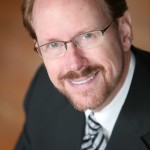 Every profession has both a science and an art. The science can be taught, and people can be equally good at the science of any profession. The key to differentiate yourself in your profession is to develop the art side, not just the science side.
Every profession has both a science and an art. The science can be taught, and people can be equally good at the science of any profession. The key to differentiate yourself in your profession is to develop the art side, not just the science side.
For example, I was at a photography workshop a few years ago, and I met people who had all of the latest equipment—cameras, lenses, tripods, everything—and they knew the science of photography very well. Many of them were on an equal footing with their knowledge of the equipment, yet their ability to take stunning photographs varied quite a bit. In other words, there is an art side to being able to capture that amazing picture.
The same is true with any profession, whether you are in sales, IT, customer service, or even medicine. After all, if healing was only a science, it wouldn’t matter who your doctor was. But you and I both know it does matter who your doctor is, and it’s not because of the science; it’s because of the art. It’s about what the individual brings to their medical practice—their uniqueness, their problem-solving ability, their diagnostic capabilities, and their way of solving problems in real time when they’re working on you.
Here’s a case in point: A number of years ago, one of my brothers was having a problem with a pain in his leg that wouldn’t go away. He went to an orthopedic surgeon. After an exam, the surgeon diagnosed the problem and decided that my brother needed surgery to repair it.
So my brother did what we all should do: He got a second opinion. This second doctor didn’t make a diagnosis, but recommended exploratory surgery. I suggested to my brother that he get one more opinion.
He then went to a third orthopedic surgeon. This doctor looked at my brother and asked, “Do you always wear your belt at the same height on your pants? Or does it vary?”
My brother replied, “No, I always wear my belt at this height every day.”
“Do you always wear a leather belt?” the doctor continued.
“Yes, I always wear a leather belt,” my brother replied.
The doctor said, “Why don’t you try a squishy belt that flexes? Just see if that works. If the problem persists, then come back.”
My brother tried a squishy belt, and it wasn’t very long before the problem went away completely.
Apparently, the problem was that a nerve was being cut off by the belt. Fortunately, this third doctor had mastered the art of medicine. He knew to go beyond the science and notice the subtleties of each patient … and to take that into account before making a diagnosis.
Which of those doctors would you rather have? I don’t know about you, but I want the squishy belt guy. I want the doctor who is more creative, who is looking at the bigger picture, who is thinking outside of the box. I want a doctor who has developed both the science and the art of his profession.
Again, every profession has an art and a science. So as we start another year, it’s important to ask yourself a number of questions, including:
- Am I learning and maximizing the science side of my profession?
- Am I taking the classes I need to take?
- Am I updating and upgrading myself?
- Am I getting training on all the new tools and capabilities that will help me do my job better?
But don’t stop there. Continue with the art-focused questions:
- Am I reading about creativity and problem solving?
- Am I making sure that I’m not too quick to judge?
- Have I found a mentor who is sharing his or her knowledge and wisdom with me?
- Am I working on the art side of my profession, or am I just working on the science side?”
When you focus on both the art and the science of your profession, you’ll find yourself at the top of your profession and have great success and prosperity for years to come.
What is the science and the art of your profession?
©2014 Burrus Research Inc. All Rights Reserved.
DANIEL BURRUS is considered one of the world’s leading technology forecasters and innovation experts, and is the founder and CEO of Burrus Research, a research and consulting firm that monitors global advancements in technology driven trends to help clients understand how technological, social and business forces are converging to create enormous untapped opportunities. He is the author of six books including The New York Times best seller Flash Foresight.